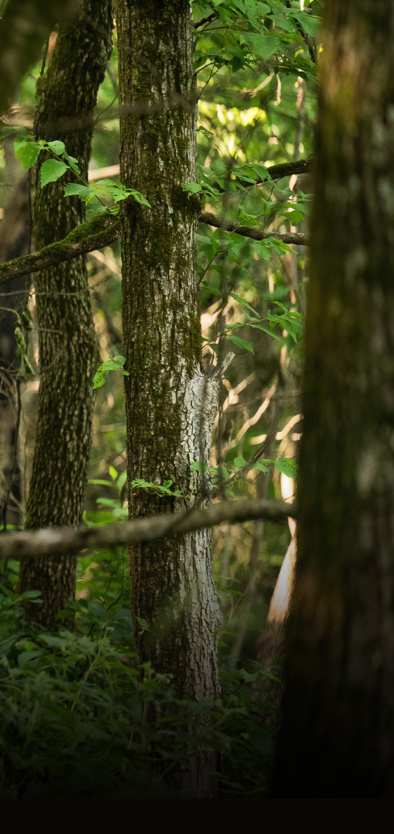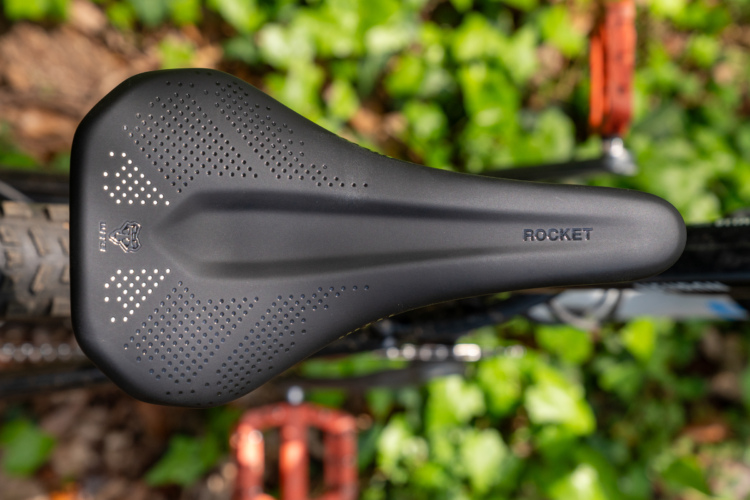
The Teravail Drawpoint is a new downcountry tire from the QBP-owned brand that’s known for quality tires at reasonable prices. For better or for worse, the brand is also known for generally lightweight and supple mountain bike tires that are more oriented towards the gravel and XC end of the spectrum than the DH side. Still, that didn’t stop me from mounting a 29×2.4″ Drawpoint with Durable Casing on the rear end of my Yeti SB140 for a couple of days of rowdy riding in the Pisgah National Forest this spring.
Teravail Drawpoint key tire specs
- Size: 29×2.4″
- Light trail or durable casing
- Black or tan sidewall
- Weight: 860g as tested
- Price: $80
- Buy from QBP retailers

Installation
I received the Teravail Drawpoint, along with another Teravail tire, the same day that I left for Pisgah. I threw the tires in a box, along with a huge bottle of Orange Seal and a tire lever, and planned to install them at the campground. I would mount the Drawpoint in the rear, and a 29×2.5″ Teravail Clifty in the front.
We arrived at the Davidson River campground late Wednesday night, so I didn’t get a chance to swap tires until after we finished two big rides on Thursday. It took a little effort to get the tires on the rims, but the bigger challenge was getting the beads to seat without a compressor. Four of us took turns trying every trick in the book, and after a couple of hours (three?), both Teravail tires were finally mounted.
I can’t say for sure if the tires are tighter or more difficult to install than others I’ve tested since I wasn’t at home with my usual setup, which consists of a Blackburn high-volume floor pump and an air compressor that I rarely need to use.
I guess the fact that the Teravail Drawpoint eventually seated with just a floor pump is all you really need to know. If you do use a floor pump, my advice is to inflate as rapidly as your arms will allow.


On the trail
On day one of our trip, we descended Farlow Gap, a steep and rocky, black-diamond trail, followed by a spin on the new and improved Butter Gap trail. For those rides, I was running a Maxxis Assegai up front and a Minion DHR II in the rear, both with DoubleDown casings. At least one of the riders in our group questioned whether the Drawpoint would be up for day two, which featured a descent down Pilot Rock, and to be honest, I had some reservations since the Teravail tires feature much lighter casings than the Maxxis Double Downs.
Reviewer profile height: 190cm (6’3″) weight: 75kg (165lb) testing zone: Southeast, USA
On the gravel road descent leading to the climb up Laurel Mountain, the Drawpoint held its line without kicking up excess gravel like the meatier Minion had the day before. It also skittered across the top of the gravel at speed, rather than truly digging in.

Once the steep singletrack climb began in earnest, I found excellent traction with the Teravail Drawpoint in the rear despite the lower-profile knobs. I never spun out in the dirt or on the rocks and roots that punctuate the climb. To be fair, I did hike-a-bike on the steepest stuff.
The other thing that helps the Drawpoint in the climbing department is its low weight. At well under 900g, it spins up quickly and doesn’t feel like an anchor holding you back.
The Drawpoint performs well in corners, and while side knobs usually get all the credit in this department, the Drawpoint relies on its supple, 1.5-ply 60 TPI casing. This allows the tire to conform to the trail better, especially at lower pressures. To be clear, a supple casing is also more prone to flats, and not everyone can get away with such a lightweight tire. I feel confident running the Drawpoint with the Durable Casing on fairly rough trails, though the Trail Casing would give me pause.
To their credit, the side knobs are well braced and feel supportive without squirming a lot. The Teravail Drawpoint transitions into corners pretty seamlessly, though I wouldn’t place it among the more intuitive tires I’ve tested. Still, it’s easy enough to figure out, and it has proved to be quite consistent.

The Pilot Rock trail is steep and rocky, and the rock field section toward the middle is particularly daunting for both rider and rim. If the supple sidewalls were going to bite me in the butt, it would be on this section. Fortunately, I emerged unscathed while setting a new PR to boot.
Share your Teravail Drawpoint review
One area where I found the Drawpoint a bit lacking is in braking traction. Again, the tread is medium-height at best, and is widely spaced, so it’s not going to deliver as much traction in either direction as a knobbier tire. The upshot is it does shed mud well, though don’t expect a lot of traction in the loose stuff.
There was no noticeable pressure loss over two days of riding in Pisgah, which also included the Upper Black Mountain trail, Buckwheat Knob, Bennett Gap, Coontree, and the North Slope trails.
Unless I was riding mostly dry, hardpack trails, I wouldn’t choose to run the Drawpoint up front. I think it would be fine in some situations, and could certainly save weight and cut down on rolling resistance for a racier downcountry or bikepacking setup, but for more general trail riding I recommend the Teravail Drawpoint as a rear tire only.

How does it compare?
It’s hard to avoid comparing the Teravail Drawpoint to the updated Maxxis Forekaster, which is Maxxis’ premier downcountry tire. On the plus side, the Drawpoint, even in the Durable Casing, weighs 100g less than a Forecaster. However, the Forekaster seems better suited to run front and rear than the Drawpoint.
Within the Teravail lineup, the Drawpoint isn’t too far removed from the Honcho, which the brand classifies as a “high-performance trail tire.” It’s been a while since I tested the Honcho, but I really liked that tire. The Drawpoint is slightly lighter and seems like a faster, more downcountry-optimized version of the Honcho.
Pros and cons of Teravail Drawpoint
Pros
- Lightweight and fast rolling
- Good climbing grip and supple in corners
Cons
- Supple sidewalls may not provide enough support for some riders
- Not quite an all-rounder; it’s best suited to dry trails that aren’t very loose
Bottom line
The Teravail Drawpoint could make for a great downcountry rear tire for a lot of riders in the right conditions. I’m happy to keep running mine through the spring and into the summer.
Interested in a review of the new Teravail Clifty all-mountain tire? LMK in the comments!




















0 Comments